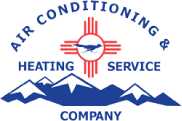
Santa Fe, New Mexico, is known for its captivating landscapes, rich cultural heritage, and high desert climate. While the region typically experiences lower average humidity compared to many other parts of the country, it’s not immune to seasonal shifts, monsoon rains, or indoor humidity fluctuations caused by modern living. In fact, the combination of Santa Fe’s climate patterns, home construction styles, and HVAC usage means that indoor humidity can vary significantly — and that variation plays a direct role in the cleanliness of your ductwork.
When humidity enters the equation, whether through outdoor conditions or indoor activities like cooking, bathing, or even drying clothes indoors, it creates an environment inside your duct system where dust, debris, and biological growth can accumulate faster. Understanding how humidity affects your home’s air ducts is the first step toward preventing poor indoor air quality and ensuring your HVAC system runs efficiently year-round.
Why Humidity Matters in Your HVAC System
Humidity isn’t just about how “sticky” the air feels. It’s a measure of how much moisture is in the air — and when that moisture is inside your ductwork, it can change the entire dynamic of your HVAC system’s performance and your home’s air quality.
Moisture Creates a Breeding Ground for Contaminants
According to the Environmental Protection Agency (EPA), indoor relative humidity levels above 60% can encourage the growth of mold, bacteria, and dust mites. While Santa Fe’s outdoor humidity averages are generally low, indoor levels can easily spike, especially during summer monsoon periods or in homes with poor ventilation. Once this moisture gets into your ducts, it can mix with dust and organic particles, creating a perfect environment for contaminants to thrive.
Increased Airborne Particle Accumulation
Humidity can make dust and debris stick to duct walls rather than being carried away by airflow. This leads to faster buildup inside your HVAC system, meaning your ducts can get dirtier in a shorter amount of time. Even a small amount of trapped moisture can make debris more adhesive, turning a light dusting into a thick, sticky coating over time.
Impact on System Efficiency
The Department of Energy notes that dirty HVAC systems can require up to 15% more energy to operate. When humidity-driven buildup clogs your ducts, airflow is restricted, forcing your HVAC unit to work harder. This not only raises energy bills but can also shorten the lifespan of your system.
Santa Fe’s Humidity Sources and Their Effects on Ductwork
While Santa Fe isn’t a tropical city, its unique combination of climate factors and living conditions can still introduce significant humidity into your ducts.
Seasonal Weather Patterns
During Santa Fe’s monsoon season (typically mid-June through September), sudden rainstorms can spike outdoor humidity levels to more than 50% — a sharp jump from the typical desert dryness. If your home’s duct system isn’t properly sealed or insulated, this outdoor humidity can infiltrate your system.
Indoor Living Habits
Everyday activities like showering, boiling water, using humidifiers, or drying clothes indoors release moisture into the air. Without proper ventilation, that moisture can circulate through your HVAC system and settle inside the ducts.
Older Home Construction
Many older homes in Santa Fe were not built with the same airtight sealing and modern ventilation systems we have today. As a result, these homes can be more prone to humidity entering through crawl spaces, attics, or poorly sealed duct joints.
The Connection Between Humidity and Indoor Air Quality
The cleanliness of your ductwork is directly tied to your home’s indoor air quality (IAQ). When humidity causes dust, dirt, and biological particles to accumulate in your ducts, those particles don’t just stay hidden — they can be released back into your living space every time your HVAC system runs.
Health Impacts of Contaminated Air
The American Lung Association has reported that indoor air can be two to five times more polluted than outdoor air. Dirty ducts influenced by humidity can circulate allergens like pollen, pet dander, dust mites, and mold spores. Over time, breathing these particles can lead to allergy symptoms, respiratory irritation, and aggravation of asthma.
Lingering Odors
Moisture in ducts can also cause musty or unpleasant odors that spread throughout your home. These odors are often the result of microbial growth or decaying organic matter trapped inside the duct system.
Long-Term Comfort
Even if you don’t notice obvious symptoms, the subtle effects of humidity-driven duct contamination can reduce your comfort at home — from uneven airflow to increased dust on surfaces.
How to Recognize When Humidity Is Affecting Your Ducts
While duct contamination isn’t always visible, there are signs that humidity might be playing a role in your HVAC system’s cleanliness.
Common Indicators:
-
Musty odors when the HVAC system is running
-
Visible dust or debris around vents and registers
-
Increased allergy or asthma symptoms indoors
-
Unexplained spikes in energy usage
-
Visible mold growth near vents or inside ducts
-
Excessive household dust despite regular cleaning
If you’re noticing any combination of these signs, it may be time to schedule a professional duct inspection.
The Process of Professional Duct Cleaning in Humid Conditions
When humidity has contributed to buildup in your ducts, a standard cleaning is often not enough — you need a thorough process designed to address both the debris and the moisture-related issues.
Step 1: Inspection
Technicians use specialized cameras and tools to assess the level of contamination inside the ducts. This helps determine whether the buildup is primarily dust-based or if there are signs of microbial growth.
Step 2: Containment
To prevent contaminants from circulating into your home during cleaning, professionals use containment equipment to isolate the ductwork.
Step 3: Source Removal
Using high-powered vacuums and rotary brushes, technicians remove dust, debris, and any loosened particles from the entire duct system.
Step 4: Moisture Control Measures
In homes where humidity has been a factor, duct sealing, insulation, or improved ventilation may be recommended to prevent future moisture infiltration.
Step 5: Post-Cleaning Inspection
A second inspection ensures that all contaminants have been removed and the ducts are clean and dry.
How Often Should Ducts Be Cleaned in Santa Fe?
The National Air Duct Cleaners Association (NADCA) recommends professional duct cleaning every 3 to 5 years for most homes. However, in climates or conditions where humidity contributes to faster buildup, more frequent cleaning may be necessary.
Factors that may increase the need for cleaning include:
-
Monsoon season impacts
-
High indoor humidity from daily living
-
Homes with pets or smokers
-
Older HVAC systems or ductwork
-
Recent renovations that produced dust and debris
Preventing Humidity-Related Duct Contamination
While you can’t control Santa Fe’s weather, there are steps you can take to minimize humidity’s effect on your ducts.
Improve Ventilation
Use exhaust fans in kitchens and bathrooms to reduce indoor moisture levels.
Maintain Your HVAC System
Change air filters regularly and have your system serviced annually to keep airflow strong and reduce buildup.
Use a Dehumidifier When Needed
Portable or whole-home dehumidifiers can help keep indoor humidity below 50%, reducing the risk of microbial growth.
Seal and Insulate Ducts
Properly sealed and insulated ducts are less likely to draw in humid air from outside or from unconditioned spaces like attics or crawl spaces.
The Cost of Delaying Duct Cleaning in Humid Conditions
Postponing duct cleaning when humidity is contributing to buildup can have long-term consequences:
-
Higher Energy Bills: Restricted airflow makes your system work harder.
-
Reduced Comfort: Inconsistent temperatures and weaker airflow in certain rooms.
-
System Wear and Tear: Extra strain on the HVAC unit can lead to more frequent repairs.
-
Health Risks: Prolonged exposure to poor indoor air quality can affect respiratory health.
Why Choose Air Conditioning & Heating Service Company for Duct Cleaning in Santa Fe
Not all duct cleaning services are the same. Air Conditioning & Heating Service Company brings a combination of local knowledge, advanced cleaning equipment, and a customer-first approach that makes a difference.
Our team understands the unique climate challenges of Santa Fe, including how seasonal humidity spikes affect your HVAC system. We provide thorough inspections, tailored cleaning methods, and practical solutions to keep your ducts clean for longer.
For Duct Cleaning Services in Santa Fe, NM, Contact Air Conditioning & Heating Service Company Today
Humidity may not be a year-round issue in Santa Fe, but when it strikes — whether from monsoon rains or indoor sources — it can speed up duct contamination and reduce your home’s air quality. A professional duct cleaning from Air Conditioning & Heating Service Company can restore your HVAC system’s efficiency, improve your indoor air quality, and help prevent future buildup.
Don’t wait until musty odors or poor airflow become a problem. Reach out to our team today and experience the difference of working with Santa Fe’s trusted duct cleaning experts.
